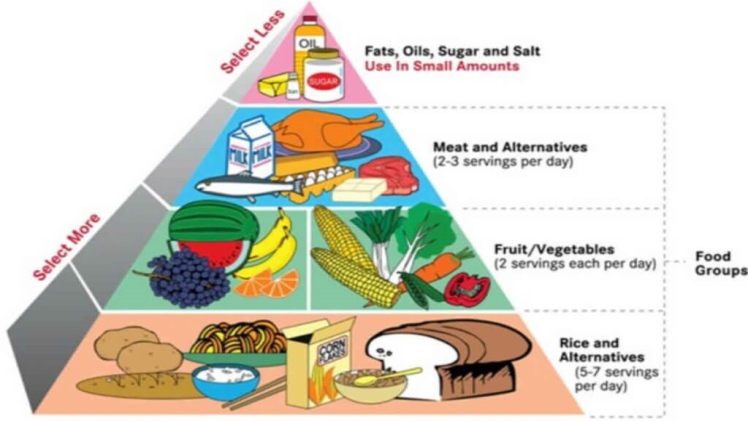A normal diet chart, often referred to as a balanced diet chart or meal plan, is a structured outline of daily food consumption designed to provide the body with essential nutrients in appropriate quantities. It serves as a guide to help individuals maintain optimal health, support bodily functions, and prevent nutritional deficiencies or excesses. In this comprehensive article, we will explore the concept of a normal diet chart, its components, and the importance of maintaining a balanced diet for overall well-being.
Section 1: Understanding a Normal Diet Chart
A normal diet chart is essentially a blueprint for daily food intake that aims to strike a balance between various food groups, ensuring that the body receives the necessary nutrients for its proper functioning. Here are some key aspects of understanding a normal diet chart:
1.1. Balanced Nutrition: The primary objective of a normal diet chart is to provide balanced nutrition. It includes an appropriate distribution of macronutrients (carbohydrates, proteins, fats) and micronutrients (vitamins and minerals) to meet the body’s daily requirements.
1.2. Customization: Normal diet charts can be customized based on individual dietary preferences, age, gender, activity level, and specific health goals. What constitutes a balanced diet may vary from person to person.
1.3. Variety: A well-structured diet chart emphasizes a diverse range of foods to ensure that individuals receive a broad spectrum of nutrients. Variety also makes meals more enjoyable and helps prevent dietary monotony.
1.4. Portion Control: Portion control is an integral part of a normal diet chart. It specifies appropriate serving sizes to prevent overeating and manage calorie intake effectively.
Section 2: Components of a Normal Diet Chart
A typical normal diet chart consists of several key components that collectively contribute to a balanced and healthy eating plan:
2.1. Food Groups: The chart includes various food groups such as fruits, vegetables, grains (preferably whole grains), lean proteins (including plant-based sources for vegetarians and vegans), dairy or dairy alternatives, and healthy fats.
2.2. Caloric Needs: It takes into account an individual’s daily caloric needs, which vary based on factors like age, gender, activity level, and health goals (e.g., weight maintenance, weight loss, or muscle gain).
2.3. Meal Planning: A normal diet chart outlines meal plans for each day, including breakfast, lunch, dinner, and snacks.Change to this: It specifies the types and quantities of foods to consume during each meal, facilitating adherence to a nutritious regimen like the 3000-Calorie Meal Plan.
2.4. Portion Sizes: Portion sizes are clearly defined to help individuals control calorie intake and prevent overeating.
2.5. Nutrient Distribution: The chart ensures an appropriate distribution of macronutrients, with carbohydrates providing energy, proteins supporting tissue repair and growth, and fats contributing to overall health. It also considers the intake of essential vitamins and minerals.
2.6. Hydration: Adequate hydration is a vital aspect of a balanced diet. The chart may include recommendations for daily water intake.
Section 3: Benefits of Following a Normal Diet Chart
Adhering to a normal diet chart offers a multitude of benefits for overall health and well-being:
3.1. Nutrient Adequacy: A balanced diet chart helps ensure that the body receives all the essential nutrients it needs, reducing the risk of nutritional deficiencies.
3.2. Weight Management: It aids in weight management by controlling calorie intake and promoting portion control. Whether the goal is weight loss, maintenance, or muscle gain, a normal diet chart can be tailored accordingly.
3.3. Energy Levels: A well-balanced diet provides a steady supply of energy throughout the day, helping to maintain energy levels and sustain physical and mental activities.
3.4. Disease Prevention: Following a normal diet chart may reduce the risk of chronic diseases such as heart disease, diabetes, and certain types of cancer, as it promotes healthy eating habits.
3.5. Digestive Health: A diet rich in fiber, which is often included in balanced diets, supports digestive health and regular bowel movements.
3.6. Cognitive Function: Proper nutrition is essential for cognitive function and mental clarity. A balanced diet chart can contribute to better cognitive performance.
Section 4: Creating Your Own Normal Diet Chart
Creating a personalized normal diet chart involves several steps to tailor the plan to your specific dietary needs and goals:
4.1. Define Your Goals: Begin by identifying your dietary objectives. Do you want to lose weight, gain muscle, maintain your current weight, or address specific health concerns? Clear goals will shape your diet chart.
4.2. Determine Your Caloric Needs: Calculate your daily caloric requirements based on factors such as age, gender, activity level, and goals. Online calculators or consultations with registered dietitians can help with this.
4.3. Choose Nutrient-Rich Foods: Prioritize nutrient-dense foods such as fruits, vegetables, whole grains, lean proteins, and healthy fats. Limit or avoid highly processed and sugary items.
4.4. Plan Balanced Meals: Create daily meal plans that distribute macronutrients and calories evenly throughout the day. Include a variety of foods for a diverse nutrient intake.
4.5. Portion Control: Pay attention to portion sizes to avoid excessive calorie consumption. Use measuring tools or visual cues to estimate appropriate portions.
4.6. Monitor and Adjust: Regularly track your food intake and compare it to your diet chart. Make adjustments as needed to ensure you stay on track with your goals.
4.7. Seek Professional Guidance: If you have specific dietary requirements, health conditions, or are unsure about creating a diet chart, consider consulting a registered dietitian or nutritionist. They can provide expert guidance and tailor a plan to your unique needs.
Section 5: Conclusion
A normal diet chart serves as a valuable tool for individuals looking to maintain optimal health, achieve specific dietary goals, and make informed choices about their food intake. By understanding the components of a balanced diet chart and customizing it to individual needs, anyone can embark on a journey toward better nutrition and overall well-being. Remember that a balanced diet is not just a short-term plan but a sustainable approach to lifelong health and vitality.


